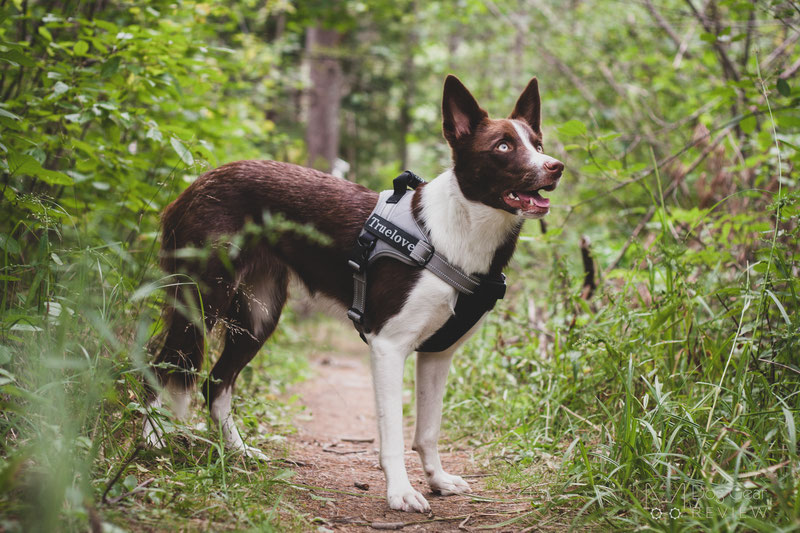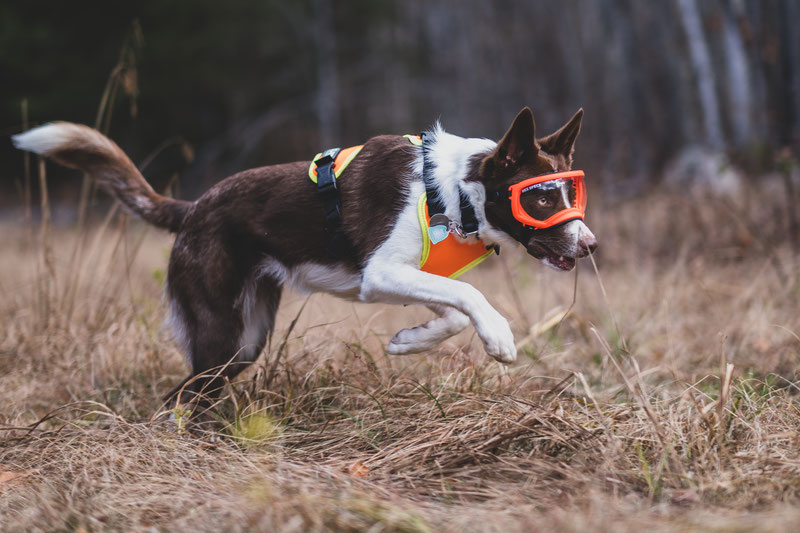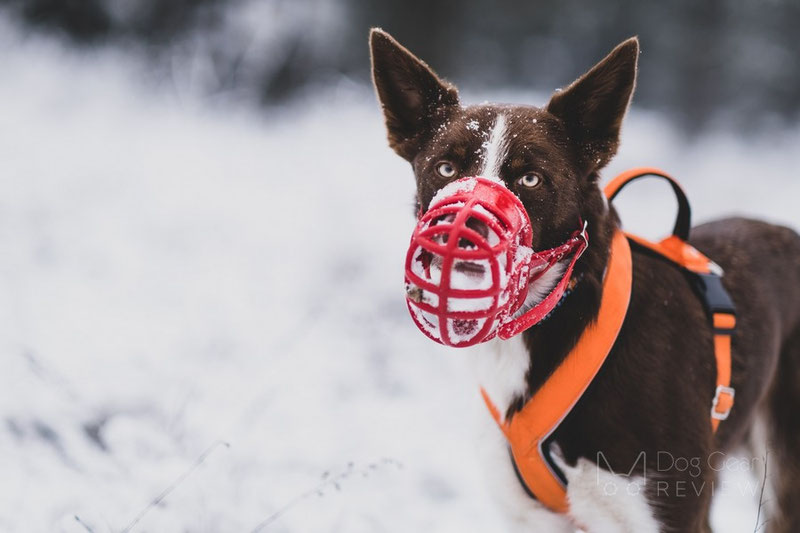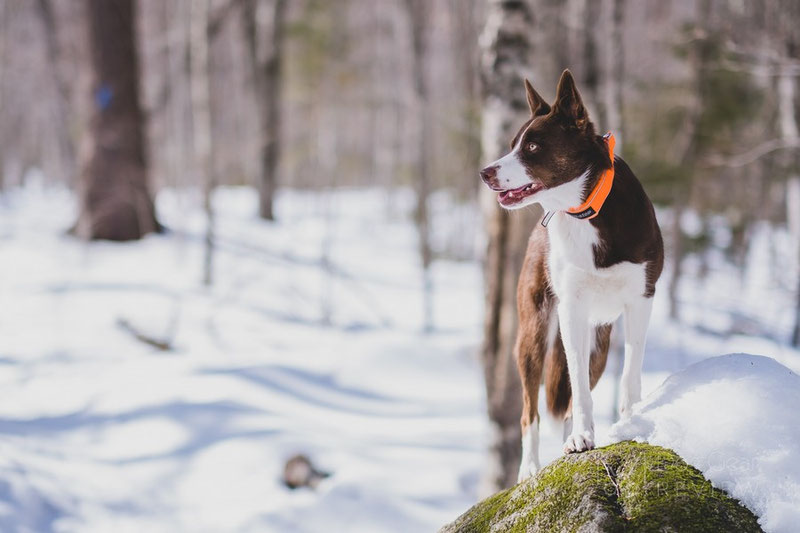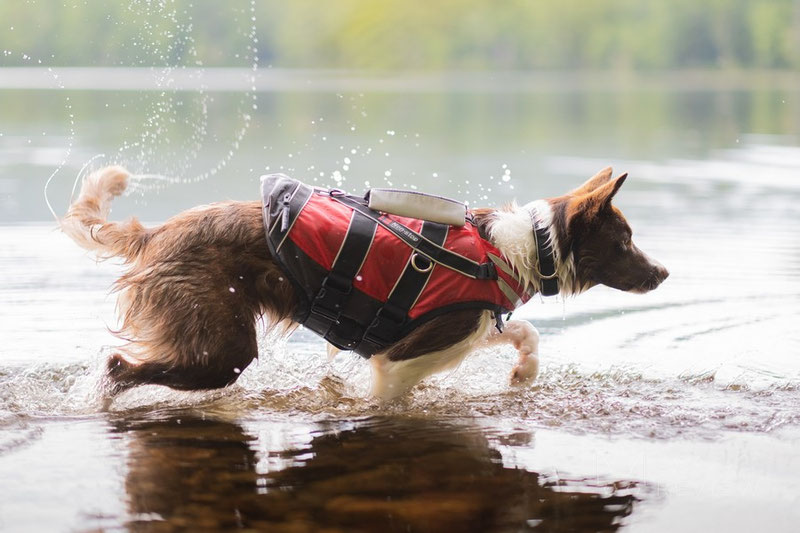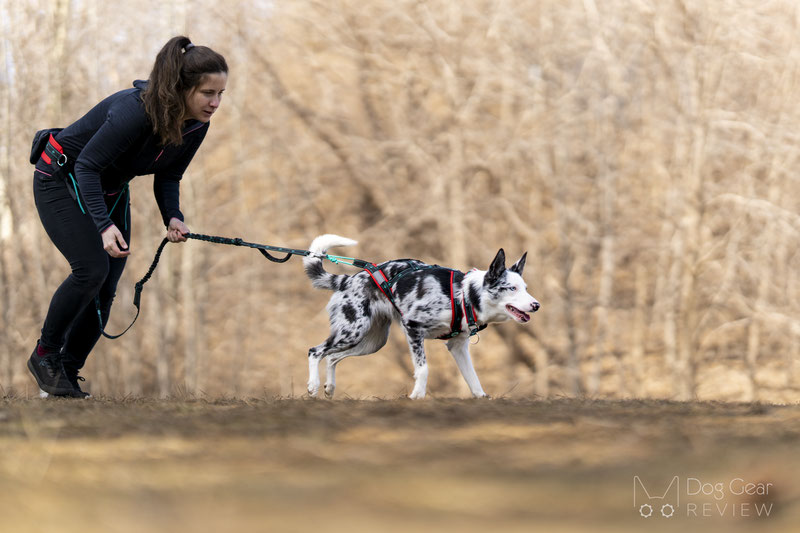This is probably one of the most debated topics in the dog gear world, and people on both sides tend to have strong feelings about it. Unfortunately, companies and even vets are trying to artificially create more arguments around it by posting photos or videos of dogs in Norwegian harnesses that are adjusted inappropriately. They post pictures of harnesses that are clearly restricting the shoulders and are concluding about a line of products based on a misfitting harness, which is misleading.
While we are no experts, vets and do not have any specialized certifications on the topic, we would like to be the “devil’s advocates” and raise a few questions against this popular argument. More and more people come to us after hearing the sentence, “Norwegian harnesses are restricting the shoulders and shouldn’t be used” without having seen any research supporting this.
Before writing this article, we spent weeks reading researches and experiments done on the topic by credited organizations. We also watched and read many videos and posts (and the comments under them) that went viral even though they rarely had any scientific evidence behind them. Our goal was to get the full picture and summarize everything for you in one article. Our post was not sponsored or supported by any of the mentioned companies. Everything stated here is based on our unbiased opinion - just like all our reviews.

What is a Norwegian harness?
While different namings are used for harness styles, Norwegian harnesses mostly mean the design when the harness has a neck strap going across the dog’s shoulders. It can have a bigger “saddle” part on the back, or it could just have two straps going around the neck and the chest of the dog.
Since Julius-K9 is probably the best-known brand selling these harnesses, many call the design “Julius harness”. However, Julius-K9 also came out with different Y-harnesses lately, and most prominent companies (Hurtta, Kurgo, Ezydog, Truelove, etc.) also have their version with the Norwegian design.
Critical thinking
Everyone has different priorities when choosing a harness and prefers different designs. We are big advocates of helping others figure out what they need for their dog, and there is nothing wrong with not liking a specific type of harness. It is essential though to understand the reasoning behind the pros and cons of each gear or tool you use for your dog since you are the only one who can decide what would work for you. This is why we feel the need to suggest applying critical thinking when one hears about a gear/tool’s adverse health effects. These days you can find an argument against using EVERY gear or tool, so it’s not a surprise that there are people against Norwegian harnesses.
Even if one knows nothing about the details of harnesses and the dogs’ anatomy, it should raise questions that many service dogs, police dogs, military dogs, search & rescue dogs are using these harnesses for decades without issues. These dogs worth an incredible amount of money, takes a very long time to train, and do essential jobs; hence their handlers/trainers are taking everything very seriously around them. If it were proven that these harnesses are changing the natural gait of the dog and ruining their joints, they surely wouldn’t be used for these active working dogs.
To say something even more surprising: similar harnesses are used for some sled dogs. Some well-known mushers are still using harnesses going across the chest/neck part instead of a Y-harness. While this is a debated topic among sporting crowds, it is clear that their dogs don’t have neck and shoulders injuries after pulling sleds for long distances. We also want to point out that this isn’t the preferred harness type for most of them (as far as we know based on talking to a few competition folks), but they are still used when the pulling harness starts rubbing the dog’s chest on competitions like Iditarod.
But then, where is this argument coming from? Is it safe to use a harness going across the chest? Is it actually restrictive? There is, of course, some truth behind these arguments.
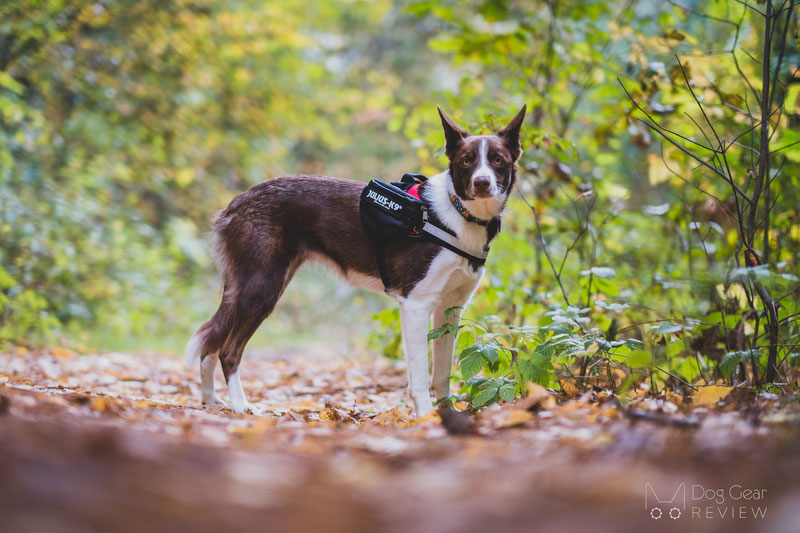
Is it restricting the shoulders off-leash?
Many people seem to imagine the restricted shoulder movement caused by these harnesses like running in a pencil skirt - they think that dogs cannot move their front legs freely when wearing a Norwegian harness.
First of all, the proper adjustment for any harness is essential! Norwegian harnesses (and most others) are designed to sit farther behind the front leg (not in the armpits!), leaving enough room for the shoulder to move back. If positioned like that, there is no way the harness can restrict the shoulder movement because there is no pressure on the front strap. Imagine a loose, flowy skirt around the legs. One can still step freely while wearing them, right? Just because it goes “across” the legs, does not restrict movement because it is loose.
If the dog’s legs are moving freely, nothing is pulling the harness back, so there is no way it puts any pressure on the front strap.
While the Norwegian harnesses shouldn’t be a tight fit around the dog’s front, the problem is that many people are setting them up that way. In this case, the harness is rubbing the armpits, restricting shoulders, and will cause problems for the dog - but to be honest, this isn’t the harness’ “fault.”
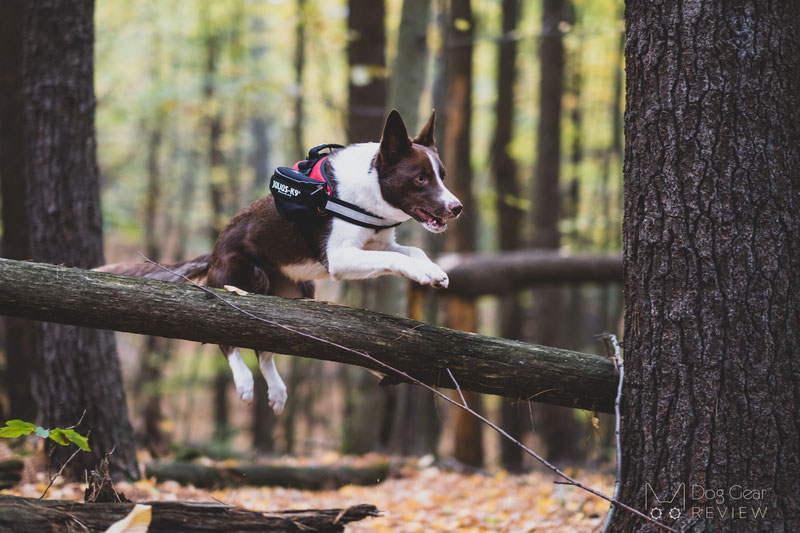
What about the shoulders when the dog pulls in a Norwegian harness?
The example mentioned above with the sleddogs makes this topic a little confusing. Based on the competition photos we found, it seems the mushers use a design where the front strap goes higher up on the neck than the ones being sold by other companies. Therefore, we differentiate between the two types and sticking to talking about the ones for “daily use” when discussing the restriction on the shoulders.
If the dog pulls on the leash, there will be pressure on the strap going across the shoulders, and it doesn’t matter how you adjust it; it will restrict the shoulders to a certain degree. Norwegian harnesses are not your best option for a strong puller and definitely not meant to be used for canicross or bikejoring.
Another aspect of this topic is that some companies are trying to market these types of harnesses as “no-pull” harness since this became the buzzword of harness marketing. This is causing more people with pullers to use them, and then their dog potentially ends up having the issues mentioned above with the shoulders. There is no original research or even an established trainer out there as far as we know who would suggest that these harnesses would help to solve pulling - even worse, as we discussed, they are harmful to the shoulders if your dog pulls. While no harness will be a magic solution for pulling without training the dog, if you have to pick one for whatever reason, a properly adjusted and fitted (!) Y-harness would at least leave the shoulders free.
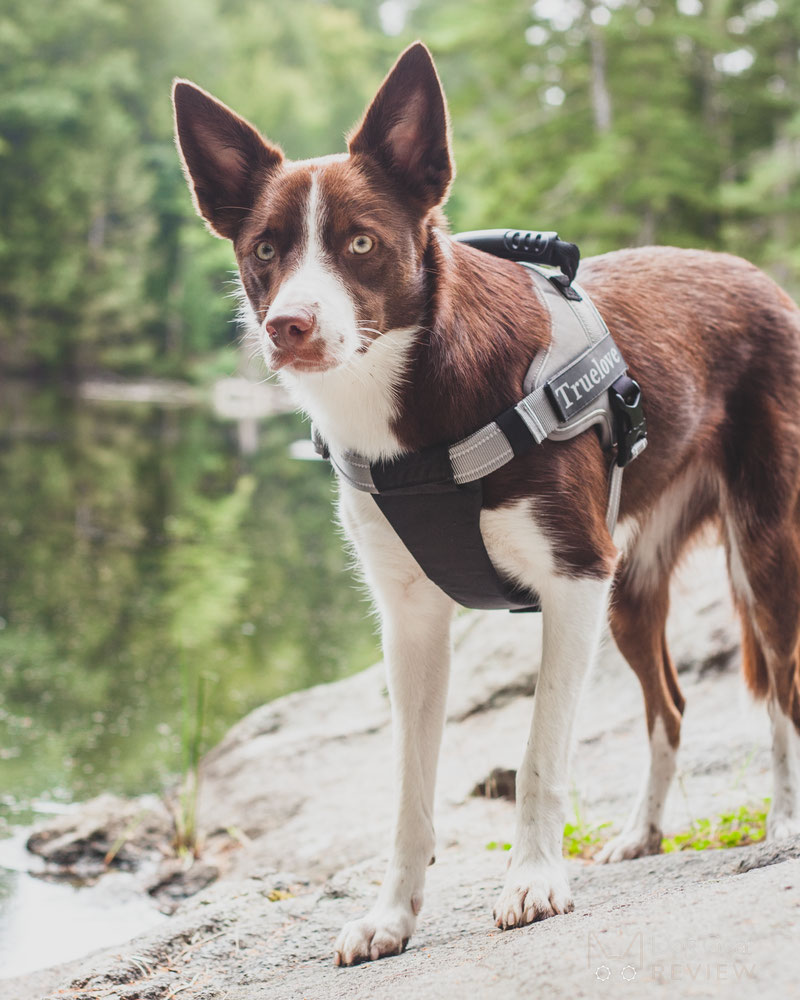
Proper adjustment
As we discussed, the main problem we see with these harnesses is that they are adjusted incorrectly. We appreciated that the Julius-K9 harnesses came with a useful guide explaining the optimal position. Below you see a graphic made by them, but of course, it applies to all other Norwegian harnesses:
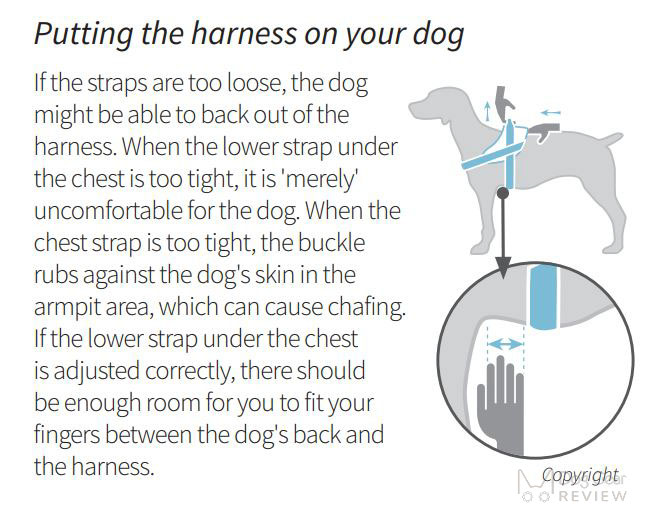
In general, the best way to position these harnesses is to have the front strap just below the neckline because it shouldn’t put pressure on the dog’s neck when sniffing the ground. The chest strap should be a few inches behind the front leg: you want to have room at least for 2-3 fingers for small dogs and your palm for bigger dogs between the back of the shoulders and the chest strap. When the dog runs or trots, the chest strap shouldn’t rub against the back of the front legs.
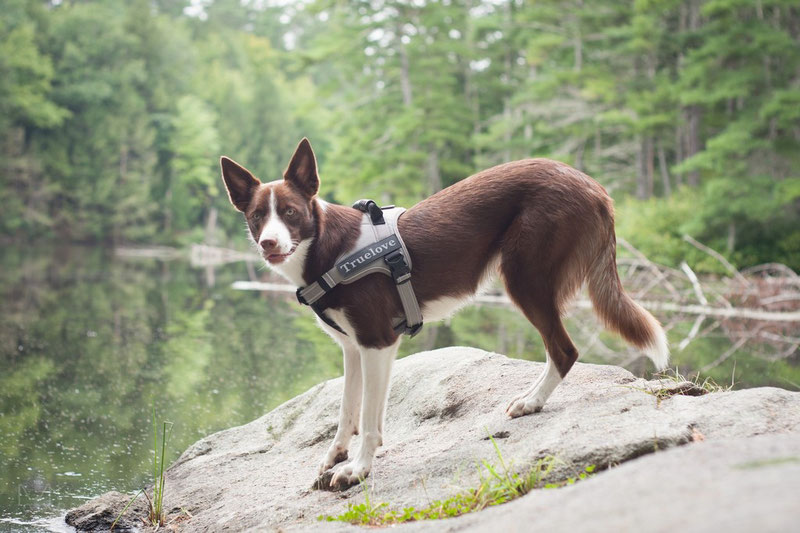
Take a look at some of the researches we found on the topic
If you are interested in reading more about this, here are a few links to papers and studies. It is surprisingly hard to find proper researches on the topic, especially one which was done on a significant enough sample (not only on few dogs) and where the harnesses (both the “restrictive” and “non-restrictive” ones) were adjusted correctly. If you have other sources to include, please send it over, and we are happy to update the article as more information comes in.
We will highlight the most exciting findings of these papers here, but we recommend checking them out on the links to get the full picture.
- Effects of restrictive and non-restrictive harnesses on shoulder extension in dogs at walk and trot by the British Veterinary Association. “The results of the study presented here showed that the angle of shoulder extension differed significantly between when dogs were not wearing a harness and when they were wearing a harness, showing greater shoulder extension when they were not wearing a harness. Both restrictive and non-restrictive harnesses showed significantly decreased extension of the shoulder. […] Interestingly, it was found that the non-restrictive harness actually restricted shoulder extension more than the restrictive harness used in the current study.”
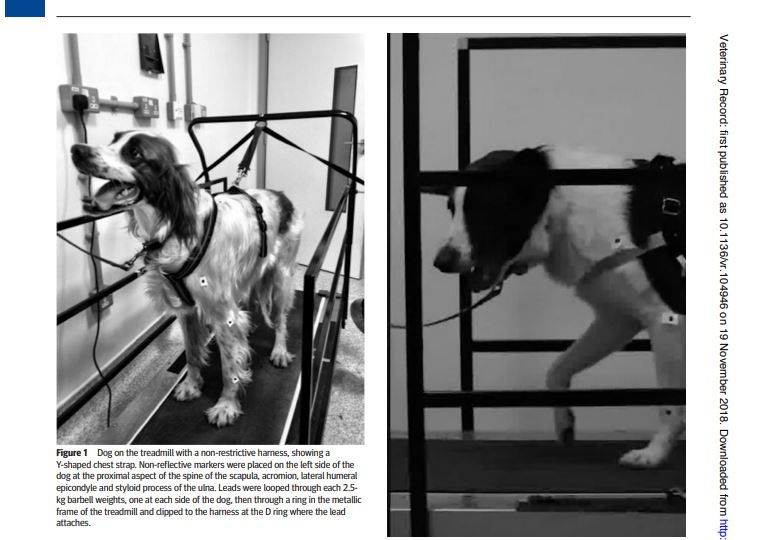
- The Effects of Five Commercially Available Harnesses on Canine Gait: here is the description of the research and here is an article on the results: “Interestingly, some harnesses were shown to affect gait characteristics more than others. In particular, dogs reacted most strongly to the Julius-K9 IDC Harness, which was classified as a restrictive harness, and the Dog-Games Original Fleece-Lined Harness, which was classified as non-restrictive. Interestingly, these two harnesses had the most surface area touching the dog’s bodies.”
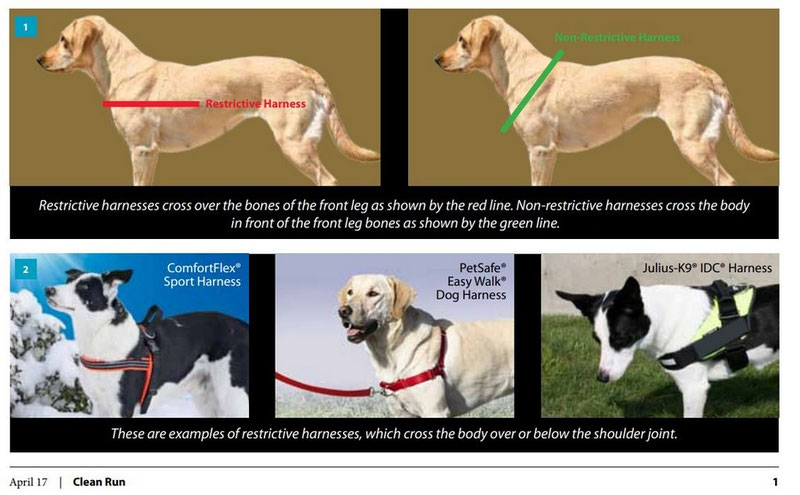
- Pressure distribution under three different types of harnesses used for guide dogs in the Veterinary Journal. While this is a fascinating study, the harness on the photo does not seem to be adjusted well, so we wouldn’t make assumptions based on the results. This incorrect adjustment just makes it even more impressive that they still found that the most significant pressure was on the chest strap, not on the neck strap. We imagine this is because the test was done on service dogs while working with their handler. It’s safe to assume that the pressure on a guide dog’s harness will be different than on an average dog even if the design is basically the same.
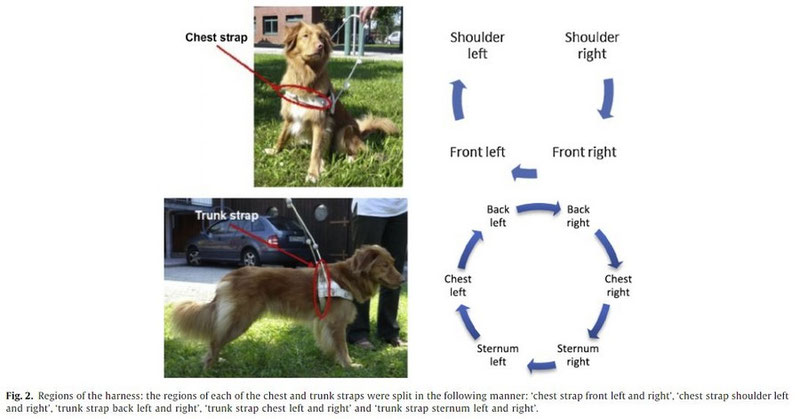
- Biomechanical analysis of the dog kinematics of different harnesses by the Cooperation Research Center for Biomechanics of the Budapest University of Technology and Economics. We know most of you will disregard this research since Julius-K9 sponsored it but wanted to leave it here since it does seem like a scientifically well-done paper. “Wearing the harnesses, does not alter the gait patterns, which could be statistically observed using the gait parameters studied. When applying retraction force by leash to the harnesses, the change in walking type is adapted similarly in case of each dog and harness.”
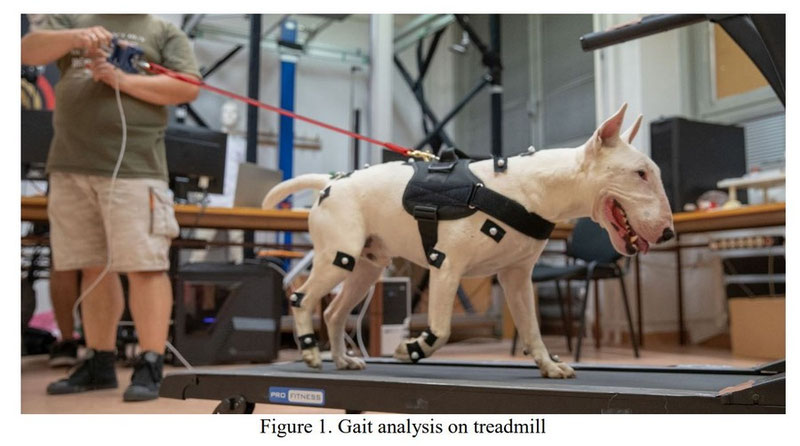
If you checked out at least the summary of these sources, you see that there is no clear answer on how/when a harness is restricting a dog off-leash and on-leash. The truth is that the above researches even categorized harness designs in the restricting vs. non-restricting category differently. If we would really want to conclude something, most studies seem to support that all harnesses (even the non-restrictive ones) are somewhat restricting the dog. We also recognize that doing a study on 5-8-10 dogs (as most of these did) can tell us almost nothing significant since we would need a much bigger sample to conclude safely.
We did not cherry-pick our sources to help the article lean one way or another; these are all the sources supported with any kind of experiments and measurements on the topic that we found online. As you see, some of them go against the finding of the other, and in the end, most of them concluded that more research would be needed to answer this question. We still included them here because we were expecting at least some of them to show apparent differences in the shoulder movement when wearing “restricting” vs. “non-restrictive” harnesses, but none of them did.
Addressing some of the misleading posts circling on social media
One of the most common arguments against these harnesses is that someone’s dog was wearing these harnesses and was diagnosed with some kind of shoulder issue. While this is an unfortunate situation, it doesn’t prove that there is a statistical correlation between them since millions of these harnesses are used without problems, and there are also plenty of dogs with shoulder issues that were using a different type of harness.
The other most commonly cited source is BSVH Hydrotherapy, who posted this interesting video showing how three different harness types changed the dog’s movement. The idea and the intention are great, but we would like to point out a few issues with their experiment. We suggest you watch the full video first if you haven’t seen it already, then read along.
The main conclusion of the concise original post is that “1 thing we never recommend is the harnesses which have a strap going across the chest”. They also briefly mention the “restricting the shoulder movement “ argument without any further explanation, measurements, or any slightly scientific proof that we have seen in the researches mentioned above.
Let’s talk about a few issues in the video:
This treadmill is way too short for this dog; you can see that he is almost at the end of it, which is already changing his gait. His steps are different than it would be on the ground or on a longer treadmill.
When they pull the dog with the leash, the dog is entirely at the end of the treadmill, probably worried that he will fall off. They pull the dog back the most when showing how wrong the second (Norwegian type) harness is. It’s just impossible to tell anything based on that because he probably makes those small steps since he is right at the edge of the treadmill. Another thing to consider is that a dog (or a human, or a horse) will have a different position and gait when pulling, that is natural, and does not necessarily prove that the harness is harmful.
What do you see when they are showing the first harness with the leash attached? The dog’s back is not straight when there is a pressure on the leash; the posture is not natural since you are pulling the middle of the back upwards. This is not good for the spine and the joints, either. To be clear, constantly pulling in any other harness than one designed for pulling sports will be somewhat harmful to the dog in the long run.
What do you think about the fit of the second harness? It seems it is way too close to the armpits. When the dog moves his leg back, it rubs against the chest straps. This is when the harness is probably restricting the shoulder movement, not because of the design, but because of the adjustment.
What do you think about the third harness? It is a better design since it doesn’t cut into the armpits, and we don’t see any differences in the gait when wearing this harness off-leash vs. the dog’s “naked” walk style.

What’s the conclusion? It is an interesting video, but we don’t think it tells anything regarding the type of harness we should or shouldn’t use - which is supposed to be the point of it and which is why it was probably shared 8,800+ times. The truth is that poorly adjusted or sized harnesses are bad for your dog, whatever the design is. A dog who pulls in ANY harness (which isn’t for pulling sports) will have a different gait, posture than one walking normally, which is why training leash manners is essential. There is no one fit all solution; there is no such thing that a harness is good or bad for all dogs. That’s why we are trying to provide as much information about products as possible so you can make your own informed decision based on your dog’s needs, health issues, and body type before buying a harness.
Summary
Our experience is that the people having issues with the Norwegian style harnesses are usually having trouble correctly fitting the harness or trying to use it for something it was never meant to be used: for dogs who pull.
Are these types of harnesses going across the shoulders perfect for all dogs for every situation? No, they aren’t. Does this mean they shouldn’t be used, and they are harmful? No, it doesn’t.
We are not saying everyone should use Norwegian harnesses by any means. They are more popular in some countries, and they are barely seen in others. There is nothing wrong with not liking a design, but making decisions based on incorrect information without any scientific evidence and actively judging others who are using it - is not something we support.
We hope to see more researches coming out on this and will update the article with them! We are open to change the findings of this article ones we see numbers supporting the opposite of what we concluded here.
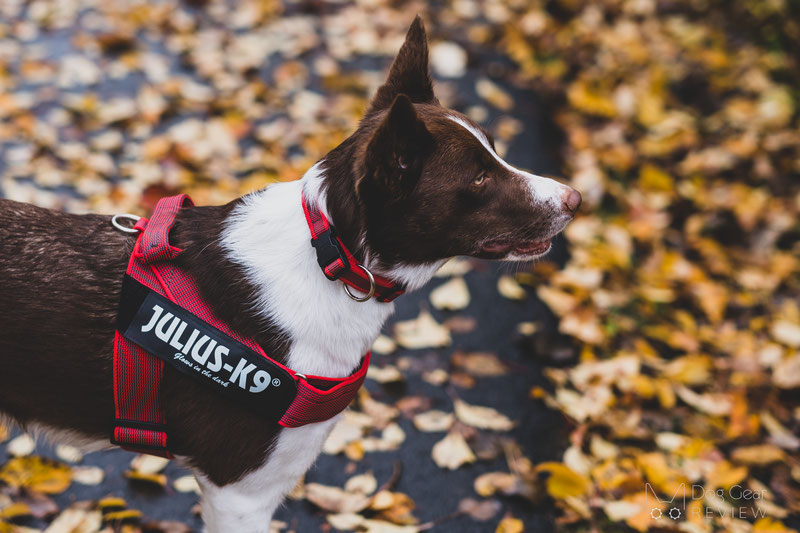
Want to read more?
We reviewed all the harnesses shown in this post so you can read more about them by clicking on the review of the Julius-K9 IDC® Color and Gray Belt Harness, the IDC Powerharness and the Truelove TLH5753 Harness.
We also wrote an article about the proper fitting of the Y-harnesses and have many more reviews of different products that you can browse on our main page.
